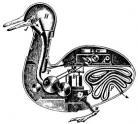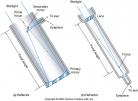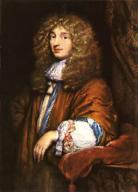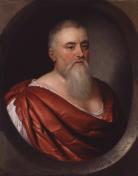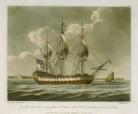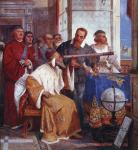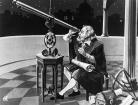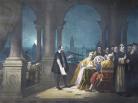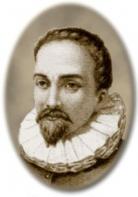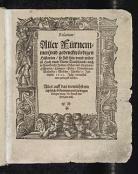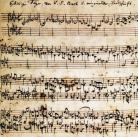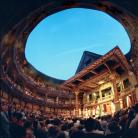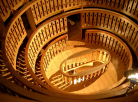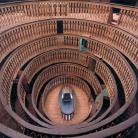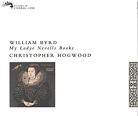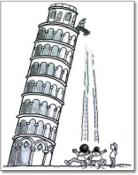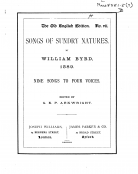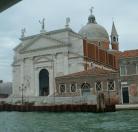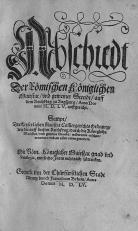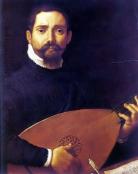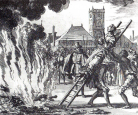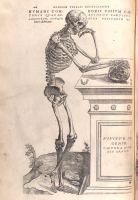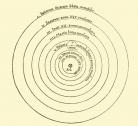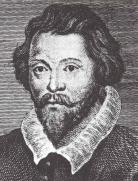Making the Human/ Inventing Venice
Created by Dino Franco Felluga on Fri, 12/30/2016 - 10:56
Part of Group:
This timeline allows students to see important events connected to the transition from Medieval to Renaissance Italy (focussed especially on Venice).
Timeline
Chronological table
|
Date |
Event | Created by | Associated Places | |
|---|---|---|---|---|
| 1756 |
Giacomo Casanova's Escape from the Doge's Palace:After being sentenced to 5 years in prison in the Leads, cells under the Doge's Palace lead slab-covered roof, Giacomo Casanova plotted his escape from the prison. Although his first attempt failed after he was moved to a new cell, he enlisted the help of Father Balbi, who was in the adjacent cell, to make holes in the ceiling of both Casanova and Balbi's cells to escape. They then made their way out through the roof and stayed the night in one of the other rooms of the Doge's Palace. Finally, they fully escaped the Palace after lying to a guard to get out the door. This portrait of Giacomo Casanova by his brother Francesco is in the public domain because the copyright term has been passed (author's life plus 100 years). |
Teresa Ortyl | ||
| 1752 to 1757 |
St. Mark's Clock RenovationMultiple modifications and renovations have been completed in the Clock Tower's history. For this renovation, Bartolomeo Ferracina was tasked with fixing the Magi carousel and the Angel. Today's visitors to the Clock Tower can see these same figures. He also made a new movement for the clock that As payment for this work, Ferracina was given the old clock mechanism and the original astronomical dial. Image by After Canaletto [Public domain], via Wikimedia Commons |
Mikaela Meyer | ||
| 1739 |
Digesting DuckIn 1739, French inventor Jacque de Vaucanson invented the Digesting Duck. The creation was the same size as a real duck and designed to appear as if it could digest small kernals of grain. The duck would eat the food and it would collect in an internal container. The duck would then produce pre-stored feces from another internal container to give the appearance of digestion. Vaucanson's hope was a truly digesting automation would be designed. Image is a picture of the design for the digesting duck. Image by Unknown - [1], Public Domain, https://commons.wikimedia.org/w/index.php?curid=1493624 |
Susannah Pritchett-Montavon | ||
| 1668 |
Invention of the Reflecting TelescopeIsaac Newton creates the first functional reflecting telescope. After studying the reflecting telescopes created by Galileo and Kepler, he determined that when light was refracted through the lens of the telescope, would distort the color (although this theory is not correct in all cases). In order to improve the telescope's capabilities, he began designing a new telescope, a reflecting telescope, which he completed in 1668. This "Newtonian Telescope" was more powerful than any refracting telescope of the same size. Rather than looking directly at the object through curved glass, which is how a refracting telescope works, a reflecting telescope uses angled mirrors to not distort color. This is the most popular type of telescope in the modern day. Image comparison courtesy of optics and binoculars. |
Catriona White | ||
| circa. 1659 |
Publication of Systema SaturniumChristiaan Huygens and his brother create the first powerful Keplerian telescope with an objective diameter of 2.24 inches and a focal length of 12 feet. He used this device to discover Titan, the largest moon of Saturn, and the tenth largest object in the solar system. He also used the same telescope to observe the Orion Nebula with enough precision to observe individual stars. Finally he used his telescope to study the rings of Saturn, and to create theories on what they were. He went on to publish his findings in Systema Saturnium, which included drawings of the Orion Nebula and characteristics of and an explanation for the rings of Saturn. |
Catriona White | ||
| 1650 |
Theodore de Mayerne Confirms Hydrogen Gas is FlammableParacelsus unknowingly observed hydrogen as he reacted acids with metals, making hydrogen gas as a side product. Theodore de Mayerene, a Swiss-born physician with Parecelsian thinking, repeated Paracelsus's experiments for the reaction between metals and acids. While de Mayerne did not know the gas produced was hydrogen or even a new element, he did discover that the byproduct gas was flammable, a crucial observation in the understanding of chemical reactions in the future. Image Source: Public Domain, https://upload.wikimedia.org/wikipedia/commons/1/11/SirTheodoreDeMayerne... |
Ryan Gansemer | ||
| 1650 to 1700 |
Decline of the Venetian NavyIn the 1600s and the beginning of the 1700s the navy of Venice and the production output of the Arsenal of Venice were on the decline as the galley that had been used for centuries had finally became obsolete and even the galleass, known in Italian as galeazza, was being replaced by frigates and three-deck woodedn ships known as "Ship of the Line" and "Man-of War" produced by the powerful British Empire as well as other northern European countries like France This work is public domain in its country of origin and other countries and areaswhere the copyright term is the author's life plus 100 years or less. Source: http://www.venicethefuture.com/schede/uk/316?aliusid=316 |
Jacob Hussey | ||
| circa. 1635 |
Invention of the MicrometerWhile experimenting with a Keplerian telescope, William Gascoigne discovered that an image viewed with a telescope became clearer when the optical focal points of two lenses was combined. Realizing that a telescope could be more accurately used when using a line to guide its direction, he created a new telescopic sight. He then created a sextant, similar to the ones used by Tycho Brahe, to measure the distance between celestial bodies with a stunning level of accuracy for the time. This was due to Gascoigne adding two adjustable points and a screw in order to increase the accuracy of the measurement. This would eventually be called a micrometer, and was one of the most common tools used for astronomical research for more than a century. Image of Robert Hooke's drawing of an early micrometer. The image is from Wikimedia and is public domain. |
Catriona White | ||
| Sep 1632 to Jul 1633 |
Galileo is tried by the Inquisition1. September 1632 to July 1633 Galileo was under inquisition by the Church. He was summoned to Rome immediately after the publication of “Dialogue Concerning the Two Chief World Systems”. He was eventually charged with heresy and spent the rest of his life under house arrest. His writings were banned. He was ordered to not have any visitors or publish any work, however he disobeyed both and continued to publish his work in other countries. This file is licensed under the Creative Commons Attribution Share Alike 3.0 Uported License. |
Kai Strubel | ||
| 1632 |
Galileo published Dialogue Concerning the Two Chief World SystemsThe book was a dialogue between three people: one who supports the Aristotelian way of thinking, one who supports the Copernican theory, and one who is impartial. Galileo was allowed to continue his research and publish with the permission of Pope Urban VIII, a friend of Galileo, on condition that his work was impartial. Galileo claimed his publication was neutral but it was obviously in favor of Copernican theory. In his writing, the supporter of Aristotle was portrayed as dim witted, often getting confused and tangled in his own arguments. This file is licensed under the Creative Commons Attribution Share Alike 3.0 Uported License. |
Kai Strubel | ||
| 1612 |
Galileo published Discourse on Bodies of WaterGalileo published findings that contradicted the Aristotelian way of thinking in “Discourse on Bodies of Water”. It argued that objects do not float because of their flat shape but because of their relative weight to the water they displace. Galileo also started mounting evidence in support of the Copernican theory, contradicting the views of the Church and Aristotle. 1616 Church order Galileo not to “hold, teach, or defend, or defend in any manner” the Copernican theory. This file is licensed under the Creative Commons Attribution Share Alike 3.0 Uported License. |
Kai Strubel | ||
| 14 Apr 1611 |
Naming of the TelescopeThe telescope was first official coined a "telescope" by the Greek Poet Giovanni Demisiani. The name roughly translates from two Greek words: tele - meaning "far", and scopion - meaning "to look or see". These two were combined to make the word 'teleskopos' translated into "far seeing". The telescope was named at a banquet held by Prince Federico Cesi, honoring Galileo as he was made a member of the "Accademia dei Lincei". This naming also lead to the standard name of the "Galilean telescope," as Galileo's contributions and uses of the telescope overshadowed those made by initial inventor Hans Lippershey. Image from Wikipedia and is public domain. |
Catriona White | ||
| 1611 |
Keplerian Telescope InventedJohannes Kepler improves on the Galilean telescope design. Due to a flawed design, most notably an inefficient lens shape and narrow field of view, most images observed with a Galilean telescope were distorted and out of focus. Magnification was also roughly limited to 30 times normal size. Kepler improved upon Galileo's design by using a convex lens for the eyepiece instead of a concave lens, as Galileo used. This allowed for a wider field of view and greater magnification, however the images were inverted, so anything observed through the telescope was upside down. The issue with this design was that in order to increase magnification further, the telescope had to be longer. The longest of these telescopes noted was 150 feet in focal length and was unable to support its own weight. The image above is a rough schematic for the design of this telescope. Image from Wikimedia and is public domain. |
Catriona White | ||
| Mar 1610 |
The Starry Messenger is published by GalileoGalileo published The Starry Messenger, a booklet explaining his discoveries that the moon was not flat and smooth, but a sphere with mountains and craters. These findings were made possible by the telescope, a recent invention Galileo learned of in July of 1609. He learned to make his own, 32 times as powerful. He discovered Jupiter’s moons, now called Galileon moons. His discoveries supported the Coppernicous theory that Celestial bodies rotate around each other. This view contradicted the Church’s doctrine and therefore was labeled heresy. This image is licenced under the Creative Commons Attribution Share Alike 3.0 Unported license. |
Kai Strubel | ||
| Jun 1609 |
Galileo's Early TelescopeIn Venice, Galileo learns of the "Dutch perspective glass", at the time the name for the telescope, and it's ability to make distant objects look larger. He immediately invented his first telescope despite having never seen one before and only having access to basic descriptions of Hans Lippershey's design. Galileo claims to have created his first telescope the day after hearing of the device. He then spent several days improving it. He went on to present this design to the public and doge Leonardo Donato. As a result, he was settled into his lectureship at Padua and had his salary doubled. The image below is a painting by H. J. Detouche and is of Galileo presenting his telescope to the doge. It is from Wikimedia commons and is public domain. |
Catriona White | ||
| 2 Oct 1608 |
Invention of the TelescopeDutch Spectacle maker Hans Lippershey applies for a patent with the State General of the Netherlands for the first refracting telescope. This early telescope was capable of magnifying objects to three times their normal size. Several weeks later, Jacob Metius, another Dutch spectacle maker, applied for the same patent. Due to the controversy surrounding who invented the telescope and the simplicity of the design, Lippershey was not granted the patent. He was however paid handsomely by the Dutch government for copies of his design, which were used in warfare spy on opposing sides. The image is of Lippershey and is from wikimedia commons. |
Catriona White | ||
| 1605 |
Relation aller Furnemmen und gedenckwurdigen HistorienThe world’s first newspaper, Relation aller Furnemmen und gedenckwurdigen Historien , or “Relation,” was printed by Johann Carolus beginning in 1605. The newspaper was published in the city of Strasbourg, a “free imperial city under the Holy Roman Empire of the German nation.” The newspaper was printed regularly so that citizens in the area could keep up with local news. This image was sourced from Wikimedia Commons and is public domain. |
Laura Titzer | ||
| 1602 |
Shakespeare's HamletHamlet is one of the most influential works of literature in the Western world. It's Shakespeare's longest piece and tells the tragic story of Prince Hamlet's revenge on his uncle Claudius and the fallout from his actions. The Danish prince is haunted by the ghost of his late father and it slowly drives him mad. Hamlet is also one of Shakespeare's most performed plays. Countless adaptations have been made since its publishing in an unknown time between 1599 and 1602. The play contains the famous "to be or not to be" soliloquy that most people read at some point during high school or college. Image source: http://thehundredbooks.com/Hamlet.htm |
Caroline Brown | ||
| circa. 1600 |
Counterpoint:Counterpoint was an musical style that comprised of combining different melodic lines, and shaped Western musical elements. Often, this term is interchanged with the word polyphony, but counterpoint is a more specific use of multiple melodic lines whereas polyphony only refers to the presence of multiple melodies. During the Renaissance, many composers focused their efforts on imitation, or the successive statement of similar melodies in each of the voices. Often, to ensure a clear relation between the two voices, the composers would have the two voices sing together and be separated by a certain interval. This was also the beginning of the popularization of canon, which is a musical form that has imitated parts throughout the piece. |
Justin Chan | ||
| circa. 1600 to circa. 1750 |
Baroque Period (Music):A time period of over exaggerated and emotional compositions. A major driving force behind the philosophy of the time was that music was a powerful tool to invoke emotions out of its listeners and to communicate to them. This belief stemmed from the fact that the Renaissance thinkers largely looked to Greek and Roman ideas. This was the time period where music began to have a large contrast within a song, and that a distinct melody and harmony began to come out. One of the most famous composers of this time period was Johann Sebastian Bach, known for his "grand, truly Protestant, robust and erudite genius" (Hegel). Image Source: Wikipedia |
Justin Chan | ||
| 1600 to 1602 |
Construction of the Bridge of Sighs:The Bridge of Sighs was designed by Antonio Contin to connect the Doge's Palace to the New Prison (which was still under construction at the time the Bridge of Sighs was built). Unfortunately, Antonio Contin died before he could see it constructed. It is of neoclassical style with its most notable features the faces on the bottom-most part of the sides and its ornate windows. The name Bridge of Sighs was first given by Lord Byron from the idea that those who crossed it on the way to the New Prison would sigh upon looking out the windows as it was the last glimpse of Venice before being placed in prison. The picture is by Nino Barbieri (Own work) [GFDL (http://www.gnu.org/copyleft/fdl.html), CC-BY-SA-3.0 .(http://creativecommons.org/licenses/by-sa/3.0/) or CC BY 2.5 (http://creativecommons.org/licenses/by/2.5)], via Wikimedia Commons. It is free to copy and redistribute. |
Teresa Ortyl | ||
| 1600 |
Portrait of Cardinal Fernando Niño de GuevaraThis portrait by El Greco was completed in 1600. It is among the first ones to show the evolving field of optics. By the 17th Century, frames made for holding the lenses could reach over the ears and were made from different materials. The image is from Wikimedia Commons and is available for public use. |
Sahil Lala | ||
| 1599 to 1644 |
Shakespeare's Globe TheatreThe original theatre was constructed in 1599, but later burned down. The reconstruction was finished in 1614 and then demolished in 1644. The final reconstruction of the theatre was done at what historians believe to be around the same area as the original theatre and was built to accurately represent the orignal in terms of seating and layout. The theatre has a capacity of 1400 spectators, though the original had a capacity of 3000. Image source: http://londonkatalog.com/shakespeares-globe-theatre/ |
Caroline Brown | ||
| 1597 |
Dafne, the First Opera96 Normal 0 false false false EN-US X-NONE X-NONE DefSemiHidden="false" DefQFormat="false" DefPriority="99" LatentStyleCount="380"> UnhideWhenUsed="true" QFormat="true" Name="heading 2"/> UnhideWhenUsed="true" QFormat="true" Name="heading 3"/> UnhideWhenUsed="true" QFormat="true" Name="heading 4"/> UnhideWhenUsed="true" QFormat="true" Name="heading 5"/> UnhideWhenUsed="true" QFormat="true" Name="heading 6"/> UnhideWhenUsed="true" QFormat="true" Name="heading 7"/> UnhideWhenUsed="true" QFormat="true" Name="heading 8"/> UnhideWhenUsed="true" QFormat="true" Name="heading 9"/> Name="index 1"/> Name="index 2"/> Name="index 3"/> Name="index 4"/> Name="index 5"/> Name="index 6"/> Name="index 7"/> Name="index 8"/> Name="index 9"/> UnhideWhenUsed="true" Name="toc 1"/> UnhideWhenUsed="true" Name="toc 2"/> UnhideWhenUsed="true" Name="toc 3"/> UnhideWhenUsed="true" Name="toc 4"/> UnhideWhenUsed="true" Name="toc 5"/> UnhideWhenUsed="true" Name="toc 6"/> UnhideWhenUsed="true" Name="toc 7"/> UnhideWhenUsed="true" Name="toc 8"/> UnhideWhenUsed="true" Name="toc 9"/> Name="Normal Indent"/> Name="footnote text"/> Name="annotation text"/> Name="header"/> Name="footer"/> Name="index heading"/> UnhideWhenUsed="true" QFormat="true" Name="caption"/> Name="table of figures"/> Name="envelope address"/> Name="envelope return"/> Name="footnote reference"/> Name="annotation reference"/> Name="line number"/> Name="page number"/> Name="endnote reference"/> Name="endnote text"/> Name="table of authorities"/> Name="macro"/> Name="toa heading"/> Name="List"/> Name="List Bullet"/> Name="List Number"/> Name="List 2"/> Name="List 3"/> Name="List 4"/> Name="List 5"/> Name="List Bullet 2"/> Name="List Bullet 3"/> Name="List Bullet 4"/> Name="List Bullet 5"/> Name="List Number 2"/> Name="List Number 3"/> Name="List Number 4"/> Name="List Number 5"/> Name="Closing"/> Name="Signature"/> UnhideWhenUsed="true" Name="Default Paragraph Font"/> Name="Body Text"/> Name="Body Text Indent"/> Name="List Continue"/> Name="List Continue 2"/> Name="List Continue 3"/> Name="List Continue 4"/> Name="List Continue 5"/> Name="Message Header"/> Name="Salutation"/> Name="Date"/> Name="Body Text First Indent"/> Name="Body Text First Indent 2"/> Name="Note Heading"/> Name="Body Text 2"/> Name="Body Text 3"/> Name="Body Text Indent 2"/> Name="Body Text Indent 3"/> Name="Block Text"/> Name="Hyperlink"/> Name="FollowedHyperlink"/> Name="Document Map"/> Name="Plain Text"/> Name="E-mail Signature"/> Name="HTML Top of Form"/> Name="HTML Bottom of Form"/> Name="Normal (Web)"/> Name="HTML Acronym"/> Name="HTML Address"/> Name="HTML Cite"/> Name="HTML Code"/> Name="HTML Definition"/> Name="HTML Keyboard"/> Name="HTML Preformatted"/> Name="HTML Sample"/> Name="HTML Typewriter"/> Name="HTML Variable"/> Name="Normal Table"/> Name="annotation subject"/> Name="No List"/> Name="Outline List 1"/> Name="Outline List 2"/> Name="Outline List 3"/> Name="Table Simple 1"/> Name="Table Simple 2"/> Name="Table Simple 3"/> Name="Table Classic 1"/> Name="Table Classic 2"/> Name="Table Classic 3"/> Name="Table Classic 4"/> Name="Table Colorful 1"/> Name="Table Colorful 2"/> Name="Table Colorful 3"/> Name="Table Columns 1"/> Name="Table Columns 2"/> Name="Table Columns 3"/> Name="Table Columns 4"/> Name="Table Columns 5"/> Name="Table Grid 1"/> Name="Table Grid 2"/> Name="Table Grid 3"/> Name="Table Grid 4"/> Name="Table Grid 5"/> Name="Table Grid 6"/> Name="Table Grid 7"/> Name="Table Grid 8"/> Name="Table List 1"/> Name="Table List 2"/> Name="Table List 3"/> Name="Table List 4"/> Name="Table List 5"/> Name="Table List 6"/> Name="Table List 7"/> Name="Table List 8"/> Name="Table 3D effects 1"/> Name="Table 3D effects 2"/> Name="Table 3D effects 3"/> Name="Table Contemporary"/> Name="Table Elegant"/> Name="Table Professional"/> Name="Table Subtle 1"/> Name="Table Subtle 2"/> Name="Table Web 1"/> Name="Table Web 2"/> Name="Table Web 3"/> Name="Balloon Text"/> Name="Table Theme"/> Name="Note Level 1"/> Name="Note Level 2"/> Name="Note Level 3"/> Name="Note Level 4"/> Name="Note Level 5"/> Name="Note Level 6"/> Name="Note Level 7"/> Name="Note Level 8"/> Name="Note Level 9"/> Name="List Paragraph"/> Name="Intense Quote"/> Name="Subtle Emphasis"/> Name="Intense Emphasis"/> Name="Subtle Reference"/> Name="Intense Reference"/> UnhideWhenUsed="true" Name="Bibliography"/> UnhideWhenUsed="true" QFormat="true" Name="TOC Heading"/> Name="Grid Table 1 Light Accent 1"/> Name="Grid Table 6 Colorful Accent 1"/> Name="Grid Table 7 Colorful Accent 1"/> Name="Grid Table 1 Light Accent 2"/> Name="Grid Table 6 Colorful Accent 2"/> Name="Grid Table 7 Colorful Accent 2"/> Name="Grid Table 1 Light Accent 3"/> Name="Grid Table 6 Colorful Accent 3"/> Name="Grid Table 7 Colorful Accent 3"/> Name="Grid Table 1 Light Accent 4"/> Name="Grid Table 6 Colorful Accent 4"/> Name="Grid Table 7 Colorful Accent 4"/> Name="Grid Table 1 Light Accent 5"/> Name="Grid Table 6 Colorful Accent 5"/> Name="Grid Table 7 Colorful Accent 5"/> Name="Grid Table 1 Light Accent 6"/> Name="Grid Table 6 Colorful Accent 6"/> Name="Grid Table 7 Colorful Accent 6"/> Name="List Table 1 Light Accent 1"/> Name="List Table 6 Colorful Accent 1"/> Name="List Table 7 Colorful Accent 1"/> Name="List Table 1 Light Accent 2"/> Name="List Table 6 Colorful Accent 2"/> Name="List Table 7 Colorful Accent 2"/> Name="List Table 1 Light Accent 3"/> Name="List Table 6 Colorful Accent 3"/> Name="List Table 7 Colorful Accent 3"/> Name="List Table 1 Light Accent 4"/> Name="List Table 6 Colorful Accent 4"/> Name="List Table 7 Colorful Accent 4"/> Name="List Table 1 Light Accent 5"/> Name="List Table 6 Colorful Accent 5"/> Name="List Table 7 Colorful Accent 5"/> Name="List Table 1 Light Accent 6"/> Name="List Table 6 Colorful Accent 6"/> Name="List Table 7 Colorful Accent 6"/> /* Style Definitions */ table.MsoNormalTable {mso-style-name:"Table Normal"; mso-tstyle-rowband-size:0; mso-tstyle-colband-size:0; mso-style-noshow:yes; mso-style-priority:99; mso-style-parent:""; mso-padding-alt:0in 5.4pt 0in 5.4pt; mso-para-margin:0in; mso-para-margin-bottom:.0001pt; mso-pagination:widow-orphan; font-size:12.0pt; font-family:Calibri; mso-ascii-font-family:Calibri; mso-ascii-theme-font:minor-latin; mso-hansi-font-family:Calibri; mso-hansi-theme-font:minor-latin;} In Florence, Italy, the first opera was performed under the watchful eye of Jacopo Peri. It is indicative of a new musical age, as the emergence of a new paradigm centered around human perspective was developing. The opera is an exploration of individuality and appreciation of beauty in the art itself, and making its focus humanity rather than pointing toward a divine God. |
Hannah Mylin | ||
| 1595 |
Padova Anatomical Theater96 Normal 0 false false false EN-US X-NONE X-NONE DefSemiHidden="false" DefQFormat="false" DefPriority="99" LatentStyleCount="380"> UnhideWhenUsed="true" QFormat="true" Name="heading 2"/> UnhideWhenUsed="true" QFormat="true" Name="heading 3"/> UnhideWhenUsed="true" QFormat="true" Name="heading 4"/> UnhideWhenUsed="true" QFormat="true" Name="heading 5"/> UnhideWhenUsed="true" QFormat="true" Name="heading 6"/> UnhideWhenUsed="true" QFormat="true" Name="heading 7"/> UnhideWhenUsed="true" QFormat="true" Name="heading 8"/> UnhideWhenUsed="true" QFormat="true" Name="heading 9"/> Name="index 1"/> Name="index 2"/> Name="index 3"/> Name="index 4"/> Name="index 5"/> Name="index 6"/> Name="index 7"/> Name="index 8"/> Name="index 9"/> UnhideWhenUsed="true" Name="toc 1"/> UnhideWhenUsed="true" Name="toc 2"/> UnhideWhenUsed="true" Name="toc 3"/> UnhideWhenUsed="true" Name="toc 4"/> UnhideWhenUsed="true" Name="toc 5"/> UnhideWhenUsed="true" Name="toc 6"/> UnhideWhenUsed="true" Name="toc 7"/> UnhideWhenUsed="true" Name="toc 8"/> UnhideWhenUsed="true" Name="toc 9"/> Name="Normal Indent"/> Name="footnote text"/> Name="annotation text"/> Name="header"/> Name="footer"/> Name="index heading"/> UnhideWhenUsed="true" QFormat="true" Name="caption"/> Name="table of figures"/> Name="envelope address"/> Name="envelope return"/> Name="footnote reference"/> Name="annotation reference"/> Name="line number"/> Name="page number"/> Name="endnote reference"/> Name="endnote text"/> Name="table of authorities"/> Name="macro"/> Name="toa heading"/> Name="List"/> Name="List Bullet"/> Name="List Number"/> Name="List 2"/> Name="List 3"/> Name="List 4"/> Name="List 5"/> Name="List Bullet 2"/> Name="List Bullet 3"/> Name="List Bullet 4"/> Name="List Bullet 5"/> Name="List Number 2"/> Name="List Number 3"/> Name="List Number 4"/> Name="List Number 5"/> Name="Closing"/> Name="Signature"/> UnhideWhenUsed="true" Name="Default Paragraph Font"/> Name="Body Text"/> Name="Body Text Indent"/> Name="List Continue"/> Name="List Continue 2"/> Name="List Continue 3"/> Name="List Continue 4"/> Name="List Continue 5"/> Name="Message Header"/> Name="Salutation"/> Name="Date"/> Name="Body Text First Indent"/> Name="Body Text First Indent 2"/> Name="Note Heading"/> Name="Body Text 2"/> Name="Body Text 3"/> Name="Body Text Indent 2"/> Name="Body Text Indent 3"/> Name="Block Text"/> Name="Hyperlink"/> Name="FollowedHyperlink"/> Name="Document Map"/> Name="Plain Text"/> Name="E-mail Signature"/> Name="HTML Top of Form"/> Name="HTML Bottom of Form"/> Name="Normal (Web)"/> Name="HTML Acronym"/> Name="HTML Address"/> Name="HTML Cite"/> Name="HTML Code"/> Name="HTML Definition"/> Name="HTML Keyboard"/> Name="HTML Preformatted"/> Name="HTML Sample"/> Name="HTML Typewriter"/> Name="HTML Variable"/> Name="Normal Table"/> Name="annotation subject"/> Name="No List"/> Name="Outline List 1"/> Name="Outline List 2"/> Name="Outline List 3"/> Name="Table Simple 1"/> Name="Table Simple 2"/> Name="Table Simple 3"/> Name="Table Classic 1"/> Name="Table Classic 2"/> Name="Table Classic 3"/> Name="Table Classic 4"/> Name="Table Colorful 1"/> Name="Table Colorful 2"/> Name="Table Colorful 3"/> Name="Table Columns 1"/> Name="Table Columns 2"/> Name="Table Columns 3"/> Name="Table Columns 4"/> Name="Table Columns 5"/> Name="Table Grid 1"/> Name="Table Grid 2"/> Name="Table Grid 3"/> Name="Table Grid 4"/> Name="Table Grid 5"/> Name="Table Grid 6"/> Name="Table Grid 7"/> Name="Table Grid 8"/> Name="Table List 1"/> Name="Table List 2"/> Name="Table List 3"/> Name="Table List 4"/> Name="Table List 5"/> Name="Table List 6"/> Name="Table List 7"/> Name="Table List 8"/> Name="Table 3D effects 1"/> Name="Table 3D effects 2"/> Name="Table 3D effects 3"/> Name="Table Contemporary"/> Name="Table Elegant"/> Name="Table Professional"/> Name="Table Subtle 1"/> Name="Table Subtle 2"/> Name="Table Web 1"/> Name="Table Web 2"/> Name="Table Web 3"/> Name="Balloon Text"/> Name="Table Theme"/> Name="Note Level 1"/> Name="Note Level 2"/> Name="Note Level 3"/> Name="Note Level 4"/> Name="Note Level 5"/> Name="Note Level 6"/> Name="Note Level 7"/> Name="Note Level 8"/> Name="Note Level 9"/> Name="List Paragraph"/> Name="Intense Quote"/> Name="Subtle Emphasis"/> Name="Intense Emphasis"/> Name="Subtle Reference"/> Name="Intense Reference"/> UnhideWhenUsed="true" Name="Bibliography"/> UnhideWhenUsed="true" QFormat="true" Name="TOC Heading"/> Name="Grid Table 1 Light Accent 1"/> Name="Grid Table 6 Colorful Accent 1"/> Name="Grid Table 7 Colorful Accent 1"/> Name="Grid Table 1 Light Accent 2"/> Name="Grid Table 6 Colorful Accent 2"/> Name="Grid Table 7 Colorful Accent 2"/> Name="Grid Table 1 Light Accent 3"/> Name="Grid Table 6 Colorful Accent 3"/> Name="Grid Table 7 Colorful Accent 3"/> Name="Grid Table 1 Light Accent 4"/> Name="Grid Table 6 Colorful Accent 4"/> Name="Grid Table 7 Colorful Accent 4"/> Name="Grid Table 1 Light Accent 5"/> Name="Grid Table 6 Colorful Accent 5"/> Name="Grid Table 7 Colorful Accent 5"/> Name="Grid Table 1 Light Accent 6"/> Name="Grid Table 6 Colorful Accent 6"/> Name="Grid Table 7 Colorful Accent 6"/> Name="List Table 1 Light Accent 1"/> Name="List Table 6 Colorful Accent 1"/> Name="List Table 7 Colorful Accent 1"/> Name="List Table 1 Light Accent 2"/> Name="List Table 6 Colorful Accent 2"/> Name="List Table 7 Colorful Accent 2"/> Name="List Table 1 Light Accent 3"/> Name="List Table 6 Colorful Accent 3"/> Name="List Table 7 Colorful Accent 3"/> Name="List Table 1 Light Accent 4"/> Name="List Table 6 Colorful Accent 4"/> Name="List Table 7 Colorful Accent 4"/> Name="List Table 1 Light Accent 5"/> Name="List Table 6 Colorful Accent 5"/> Name="List Table 7 Colorful Accent 5"/> Name="List Table 1 Light Accent 6"/> Name="List Table 6 Colorful Accent 6"/> Name="List Table 7 Colorful Accent 6"/> /* Style Definitions */ table.MsoNormalTable {mso-style-name:"Table Normal"; mso-tstyle-rowband-size:0; mso-tstyle-colband-size:0; mso-style-noshow:yes; mso-style-priority:99; mso-style-parent:""; mso-padding-alt:0in 5.4pt 0in 5.4pt; mso-para-margin:0in; mso-para-margin-bottom:.0001pt; mso-pagination:widow-orphan; font-size:12.0pt; font-family:Calibri; mso-ascii-font-family:Calibri; mso-ascii-theme-font:minor-latin; mso-hansi-font-family:Calibri; mso-hansi-theme-font:minor-latin;} The first permanent anatomical theatre was inaugurated in 1595 and was still used up to the year of 1872. Girolamo Fabrici D’Acquapendente spearheaded the project as he himself was an anatomist and saw the value in having a permanent structure in which to teach. Previously, theatres were made of wood and were erected and dismantled as needed for public dissections. This was an important step for the advancement of medicine in science. Andreas Vesalius, who wrote and illustrated the textbook De humani corporis fabrica used this theatre for dissections. Even in this functional space, there is beautiful concentric architectural design being displayed in the elegant curves of every row and carvings in the banisters. It is reminiscent of a camera obscura type of building, with a large light source at the top. |
Hannah Mylin | ||
| 1594 to 1872 |
The University of Padova’s Anatomical TheaterConstructed in 1594 by Girolamo Fabricius Acquapendente, the anatomical theater at the University of Padova’s Palazzo del Bo is the oldest surviving anatomical theater in the world. The theater has an elliptical shape and has six tiers carved from walnut, with enough room for 300 guests. The tiers are designed so every student would have an uncompromised view of the dissection table, which is still in place. Andreas Vesalius practiced in this anatomical theater and dissections were performed until 1872. An original inscription can still be seen today, which reads, Hic locus est ubi mors gaudet succurrere vitae (This is a place where the dead are pleased to help the living). Sources: http://www.italymagazine.com/featured-story/italys-ancient-medical-schools-anatomical-theatres & http://www.atlasobscura.com/places/palazzo-del-bo Image source: http://www.nature.com/nature/journal/v454/n7205/images/454699a-i1.0.jpg and it is public domain. |
Kate Harris | ||
| 11 Sep 1591 |
My Ladye Nevells Booke:This is a manuscript created by William Byrd, and is often considered one of the most important Renaissance keyboard collections. It was put together as his 42 best works for keyboard, with some notable pieces including The Passinge Mesures Pavian and Galliarde and Have with yow to Walsingame. It was often said that these compositions were an incredible inspiration to Johann Bach and Beethoven, and that this collection is one of the first to really leave an impact on Western music. It is also fascinating because these pieces show a transition of style. The earlier music shows his polyphonic counterpoint style, but then transitions to the demanding, energetic, rhythmically intensive pieces of his later pieces. Image source: Amazon |
Justin Chan | ||
| 1589 |
Galileo published Du Motu (On Motion)an analysis of falling objects that departed from the traditional Aristolian views. At this time, he was teaching at the University of Pisa. Here he conducted his famed experiments on falling objects. It is said that he demonstrated these bold ideas by dropping two cannonballs of different weights off of the leaning tower of Pisa, showing that they accelerated at the same rate. |
Kai Strubel | ||
| 1589 |
Songs of Sundrie Natures:This is one of William Byrd's most famous compositions. This along with a collection he released a year earlier called Psalms, Sonnets and Songs of Sadness and Pietie are both recognized to have extremely impressive use of vocal parallels, which Byrd synced with the instruments. This is also notable because it is a secular volume, but was dedicated to a Catholic. This was to show his loyalty to the Crown, while also keeping true to his beliefs. Image source: imslp.org |
Justin Chan | ||
| 20 Dec 1577 |
The 1577 Fire in the Doge's Palace:On December 20, 1577, a devestating fire swept through the Doge's palace, destroying much of the southern part of the building. The Great Council Chamber and artwork made by notable artists of the day were among the things damaged in the fire. When rebuilding the Doge's palace after the damages, the original gothic design of the building was kept, although some neoclassical elements were incorporated into it. Because there was minimal structural damage due to the fire, the reconstruction was finished by 1580. The picture is by Radomil (Own work) [GFDL (http://www.gnu.org/copyleft/fdl.html), CC-BY-SA-3.0 .(http://creativecommons.org/licenses/by-sa/3.0/) or CC BY 2.5 (http://creativecommons.org/licenses/by/2.5)], via Wikimedia Commons. It is free to copy and redistribute. |
Teresa Ortyl | ||
| 1576 to 1591 |
Il RedentoreTranslating to "the Redeemer", this church by Palladio was built in order to offer thanks for those that survived the plague of 1575. This church was built in the Palladian style, reflecting Roman influence. Each year in July, there is a festival (The Festa del Redentore) that culminates in the Doge attending mass at Il Redentore. This information was taken from http://www.greatbuildings.com/buildings/Redentore_Church.html. The image is from CC BY-SA 3.0, https://commons.wikimedia.org/w/index.php?curid=20826 |
Tim Brunner | ||
| 1572 |
Saint Bartholomew's MassacreHaving taken place in 1572, the Saint Barholomew's Day massacre was a targeted group of assassinations that was then followed by a bout of Roman Catholic mob violence. The massacre began two days after the attempted assassination of Admiral Gaspard de Coligny who was a political and military leader of the Huguenots. The mob violence that ensued after the original massacre was also aimed at the Huguenots. Catherine de' Medici is thought of as the person who initiated the massacre to begin with. |
Mara Kossoff | ||
| 1571 |
The Introduction of the Galleass into the Venetian Fleet:The Galleass, also called galeazze, was a naval ship first used in 1571 against the Ottoman Empire in the Battle of Lepatano. The Galleass’s shape and design comes from earlier Venetian ships called galea grossa. The galea grossa, which in English means great galley, according to an academic paper from High Point University written by Andrew Tzavaras, is better than the smaller, commonplace galley because the "standard galleys lacked cargo holds, devoting most of their decks to the oarsmen, great galleys offered a balance between speed, space, and security.” The Galleass is similar to the galea grossa except that the Galleass is much larger and takes advantage of gunpowder. The Galleass became one of the very first naval ships to implement cannons and explosives. As a result, the Galleass was very dominant in the Mediterranean and was successful at keeping the Ottoman Empire at bay with its impressive bombardment during the late 1500s. After defeating the Ottomans at battle, fame of the galleass spread throughout Europe. Lastly, The Galleass served as the basis for later ship models such as the frigate. Source: Tzavarus, A. (n.d.). The Galleasses at Lepanto as a Reflection of the Sixteenth-Century Venetian Strategic Outlook [Scholarly project]. Retrieved from gjh.ojs.chass.ncsu.edu/index.php/Graduate/article/download/13/pdf_7 This picture is public domain because the picture is from A History of Naval Architecture which was published in 1851. |
Jacob Hussey | ||
| 1570 |
I quattro libri dell'architettura publishedTranslating to "The Four Books of Architecture", this work by Palladio is a set of nine rules on architecture from walls to details. This work was published in Venice in 1570. The designs mix Roman influence with the new ways of thinking from the renaissance. Widely disseminated, this book influenced architectural design for years to come. This information comes from http://architectura.cesr.univ-tours.fr/traite/Notice/ENSBA_LES1338.asp?p.... The image is taken from Wikimedia commons, from Sailko. |
Tim Brunner | ||
| 1567 |
Villa Capra "La Rotonda"Villa Capra “La Rotonda” is one of the most recognizable buildings from the Renaissance. Construction started in 1567 on the project and was designed by Palladio. During construction, Palladio died and Vincenzo Scamozzi took over the project. Neither Palladio nor Paolo Almerico, the owner, were present for the physical construction of the building. The villa was designed to be located in the suburbs, however, it is now a country farm. The building is a square and each side has its own façade. Palladio originally intended for the roof to be dome-shaped, but it was finished with smaller dome topped with a cupola. This information is from architectuul.com. The photo is from Wikimedia Commons and is free to share. |
Nathaniel Gollmer | ||
| 1566 to 1600 |
Life of Antonio ContinFollowing in the footsteps of his uncle, Antonio da Ponte, Antonio Contin was an architect in Venice. The only work he is well-known for is the Bridge of Sighs, which connects the Doge's Palace to the New Prison. Although he designed the bridge, he did not live long enough to see it finished; it was completed 2 years after his death. Much of his other work was with his uncle. He assisted with rebuilding the Rialto Bridge his uncle designed, and he took over the New Prison project after his uncle's death. |
Teresa Ortyl | ||
| 1564 to 1570 |
San Francesco della Vigna facadeThis front facade was designed by Palladio and built from 1564 and finished in 1570. Palladio was only responsible for this facade of the church, as the original designer, Jacopo Sansovino, designed and build the building years before. The signifance of this facade is that is done in a style that Palladio would repeat in his other buildings, like Il Redentore. This style was unique in the way it connected the nave to the aisles. This information is taken from http://www.isevenezia.it/en/church-and-convent/church-the-facade. |
Tim Brunner | ||
| circa. 1560 to circa. 1614 |
Construction of the New Prison:The New Prison (also known by the names Palazzo delle Prigioni or Prigione Nuove) was built to house prisoners in Venice, which allowed for the prison portion of the Doge's palace to be reduced as prisoners were transferred to the New Prison instead. The work's construction is ascribed to 5 main individuals. Giovanni Antonio Rusconi was the first architect on the project. The second architect to work on it was Antonio da Ponte. During his time working with the construction of the New Prison, he consulted with Zaccaria Briani, who was sentenced to a life in prison but worked on the project in exchange for 3 years commuted from his sentence, to improve aspects of the prison such as lighting and ventilation. The New Prison was finished by brothers Antonio and Tommaso Contin. The picture is by Abxbay (Own work) [CC BY-SA 3.0 (http://creativecommons.org/licenses/by-sa/3.0)], via Wikimedia Commons. It is free to copy and redistribute. |
Teresa Ortyl | ||
| 1557 |
Index Librorum Prohibitorum was First PublishedA product of the Roman Inquisition, the Index Librorum Prohibitorum was an annually renewed list of books, journals, and other publications viewed as heretical by the Catholic Church. Viewed as a moral and spiritual safeguard against Protestantism, censorship of anti-clerical literature was enforced in the Papal States, where heretical books were not only outlawed, but sought out during domiciliary visits from the clergy. Each publication on the list was examined closely with the intention of finding an excerpt or a statement that could be interpreted as anti-Catholic (i.e. against the interests of the Church or the faith). Authors and readers of heretical publications—among them Galileo, whose “Dialogue Concerning the Two Chief World Systems” sparked controversy among Church officials—were tried by the Inquisition; punishment for such crimes ranged in severity from house arrest to imprisonment to execution. (Image Source: Jastrow (Own Work (Own Picture)) [Public Domain], via Wikimedia Commons, https://commons.wikimedia.org/w/index.php?curid=1193142) |
Andrew Natoli | ||
| 25 Sep 1555 |
Peace of AugsburgSigned on September 25, 1555, the Peace of Augsburg was an agreement between the Holy Roman Emperor Charles V and an alliance of Lutheran princes that paved the way for greater religious freedom in Western Europe. The treaty allowed for the prince of each state within the Holy Roman Empire to decide on either Lutheranism or Roman Catholicism as the official religion in the domain over which he reigned. Under the treaty, the citizens and subjects of a given state—upon the declaration of the official religion within said state—who were not in agreement with the announced religion were provided a grace period in which they could relocate to a place where they could practice freely their desired religion. Not only did this paradigm shift convey the Catholic Church in a less absolutist light, but it also highlighted a trend toward a belief in the importance of the individual and of his preferences in religious observance. (Image Source: Unknown [Public Domain], via Wikimedia Commons, https://commons.wikimedia.org/w/index.php?curid=533576) |
Andrew Natoli | ||
| 1554 to 1612 |
Life of Giovanni GabrieliGiovanni Gabrieli was an Italian composer and organist. It is believed he studied under his uncle, Andrea Gabrieli, who was trained by Adrian Willaert. In 1585, Gabrieli became principal organist at Basilica San Marco, and was also appointed principal composer after his uncle’s death. He was also appointed organist at Scuola Grande di San Rocco. He held all three positions until his death. Basilica San Marco had a long tradition of musical excellence and Gabrieli’s work there made him one of the most noted composers in Europe. His influential Sacrae symphoniae attracted composers from all over Europe, specifically Germany, to study in Venice. This influx of German pupils helped transport Gabrieli’s music north to Germany, leading to the production of German Baroque that is well-known today. Gabrieli’s most famous musical innovations include the use of dynamics, echoing musical lines, and precise directions for instrumentation, which expanded upon Willaert’s polychoral style. He carefully specified groups of instruments and singers in seemingly odd positions around San Marco so that each could be heard with perfect clarity and in perfect balance. Source: https://en.wikipedia.org/wiki/Giovanni_Gabrieli Image source: http://www.uh.edu/engines/epi2621.htm (public domain) |
Kate Harris | ||
| 1550 to 1610 |
The Venetian SchoolThe Venetian School helped develop music composers from 1550-1610. It was housed in the Basilica San Marco due to its unique architecture that made it a great space for music and choir. The invention of the printing press also allowed composers to print music, which drew even more musicians and composers to Venice. The most notable music productions had elements of a choir, brass, sting, and organs to create a mesmerizing sound. |
Nathaniel Gollmer | ||
| 1549 to 1614 |
Palladian BasilicaThe Palladian Basilica started renovation in 1549 and was fully completed in 1614. Palladio designed the major renovations, however, died before the project was completed. It was intended to be used as a public space for the people. The upper floor is one giant room, with no columns supporting the weight of the roof. During construction, part of the famous two-story loggias, or porches, collapsed, thus Palladio was hired to fix the engineering issues of the building. It is located in the Piazza dei Signori. This information is from www.museicivicivicenza.it/en. The picture is from Wikimedia Commons and is free to share. |
Nathaniel Gollmer | ||
| 1548 to 1616 |
Vincenzo ScamozziScamozzi was an architect from Italy, and a pupil of Palladio's. He learned from Palladio directly, and was comissioned to finish several of Palladio's buildings after his death. Although there is clear Palladian influence in his architecture, Scamozzi ventured to leave his mark, as demonstrated by his influence on the Teatro Olimpico. Like Palladio, he wrote a book on architecture, titled "L'Idea dell'Architectura Universale." This information was taken from http://www.nytimes.com/2003/10/04/style/breaking-free-of-palladios-shack.... This image is from Wikimedia Commons and is from the public domain. |
Tim Brunner | ||
| 1547 |
Tre Savi sopra Eresia96 Normal 0 false false false EN-US X-NONE X-NONE DefSemiHidden="false" DefQFormat="false" DefPriority="99" LatentStyleCount="380"> UnhideWhenUsed="true" QFormat="true" Name="heading 2"/> UnhideWhenUsed="true" QFormat="true" Name="heading 3"/> UnhideWhenUsed="true" QFormat="true" Name="heading 4"/> UnhideWhenUsed="true" QFormat="true" Name="heading 5"/> UnhideWhenUsed="true" QFormat="true" Name="heading 6"/> UnhideWhenUsed="true" QFormat="true" Name="heading 7"/> UnhideWhenUsed="true" QFormat="true" Name="heading 8"/> UnhideWhenUsed="true" QFormat="true" Name="heading 9"/> Name="index 1"/> Name="index 2"/> Name="index 3"/> Name="index 4"/> Name="index 5"/> Name="index 6"/> Name="index 7"/> Name="index 8"/> Name="index 9"/> UnhideWhenUsed="true" Name="toc 1"/> UnhideWhenUsed="true" Name="toc 2"/> UnhideWhenUsed="true" Name="toc 3"/> UnhideWhenUsed="true" Name="toc 4"/> UnhideWhenUsed="true" Name="toc 5"/> UnhideWhenUsed="true" Name="toc 6"/> UnhideWhenUsed="true" Name="toc 7"/> UnhideWhenUsed="true" Name="toc 8"/> UnhideWhenUsed="true" Name="toc 9"/> Name="Normal Indent"/> Name="footnote text"/> Name="annotation text"/> Name="header"/> Name="footer"/> Name="index heading"/> UnhideWhenUsed="true" QFormat="true" Name="caption"/> Name="table of figures"/> Name="envelope address"/> Name="envelope return"/> Name="footnote reference"/> Name="annotation reference"/> Name="line number"/> Name="page number"/> Name="endnote reference"/> Name="endnote text"/> Name="table of authorities"/> Name="macro"/> Name="toa heading"/> Name="List"/> Name="List Bullet"/> Name="List Number"/> Name="List 2"/> Name="List 3"/> Name="List 4"/> Name="List 5"/> Name="List Bullet 2"/> Name="List Bullet 3"/> Name="List Bullet 4"/> Name="List Bullet 5"/> Name="List Number 2"/> Name="List Number 3"/> Name="List Number 4"/> Name="List Number 5"/> Name="Closing"/> Name="Signature"/> UnhideWhenUsed="true" Name="Default Paragraph Font"/> Name="Body Text"/> Name="Body Text Indent"/> Name="List Continue"/> Name="List Continue 2"/> Name="List Continue 3"/> Name="List Continue 4"/> Name="List Continue 5"/> Name="Message Header"/> Name="Salutation"/> Name="Date"/> Name="Body Text First Indent"/> Name="Body Text First Indent 2"/> Name="Note Heading"/> Name="Body Text 2"/> Name="Body Text 3"/> Name="Body Text Indent 2"/> Name="Body Text Indent 3"/> Name="Block Text"/> Name="Hyperlink"/> Name="FollowedHyperlink"/> Name="Document Map"/> Name="Plain Text"/> Name="E-mail Signature"/> Name="HTML Top of Form"/> Name="HTML Bottom of Form"/> Name="Normal (Web)"/> Name="HTML Acronym"/> Name="HTML Address"/> Name="HTML Cite"/> Name="HTML Code"/> Name="HTML Definition"/> Name="HTML Keyboard"/> Name="HTML Preformatted"/> Name="HTML Sample"/> Name="HTML Typewriter"/> Name="HTML Variable"/> Name="Normal Table"/> Name="annotation subject"/> Name="No List"/> Name="Outline List 1"/> Name="Outline List 2"/> Name="Outline List 3"/> Name="Table Simple 1"/> Name="Table Simple 2"/> Name="Table Simple 3"/> Name="Table Classic 1"/> Name="Table Classic 2"/> Name="Table Classic 3"/> Name="Table Classic 4"/> Name="Table Colorful 1"/> Name="Table Colorful 2"/> Name="Table Colorful 3"/> Name="Table Columns 1"/> Name="Table Columns 2"/> Name="Table Columns 3"/> Name="Table Columns 4"/> Name="Table Columns 5"/> Name="Table Grid 1"/> Name="Table Grid 2"/> Name="Table Grid 3"/> Name="Table Grid 4"/> Name="Table Grid 5"/> Name="Table Grid 6"/> Name="Table Grid 7"/> Name="Table Grid 8"/> Name="Table List 1"/> Name="Table List 2"/> Name="Table List 3"/> Name="Table List 4"/> Name="Table List 5"/> Name="Table List 6"/> Name="Table List 7"/> Name="Table List 8"/> Name="Table 3D effects 1"/> Name="Table 3D effects 2"/> Name="Table 3D effects 3"/> Name="Table Contemporary"/> Name="Table Elegant"/> Name="Table Professional"/> Name="Table Subtle 1"/> Name="Table Subtle 2"/> Name="Table Web 1"/> Name="Table Web 2"/> Name="Table Web 3"/> Name="Balloon Text"/> Name="Table Theme"/> Name="Note Level 1"/> Name="Note Level 2"/> Name="Note Level 3"/> Name="Note Level 4"/> Name="Note Level 5"/> Name="Note Level 6"/> Name="Note Level 7"/> Name="Note Level 8"/> Name="Note Level 9"/> Name="List Paragraph"/> Name="Intense Quote"/> Name="Subtle Emphasis"/> Name="Intense Emphasis"/> Name="Subtle Reference"/> Name="Intense Reference"/> UnhideWhenUsed="true" Name="Bibliography"/> UnhideWhenUsed="true" QFormat="true" Name="TOC Heading"/> Name="Grid Table 1 Light Accent 1"/> Name="Grid Table 6 Colorful Accent 1"/> Name="Grid Table 7 Colorful Accent 1"/> Name="Grid Table 1 Light Accent 2"/> Name="Grid Table 6 Colorful Accent 2"/> Name="Grid Table 7 Colorful Accent 2"/> Name="Grid Table 1 Light Accent 3"/> Name="Grid Table 6 Colorful Accent 3"/> Name="Grid Table 7 Colorful Accent 3"/> Name="Grid Table 1 Light Accent 4"/> Name="Grid Table 6 Colorful Accent 4"/> Name="Grid Table 7 Colorful Accent 4"/> Name="Grid Table 1 Light Accent 5"/> Name="Grid Table 6 Colorful Accent 5"/> Name="Grid Table 7 Colorful Accent 5"/> Name="Grid Table 1 Light Accent 6"/> Name="Grid Table 6 Colorful Accent 6"/> Name="Grid Table 7 Colorful Accent 6"/> Name="List Table 1 Light Accent 1"/> Name="List Table 6 Colorful Accent 1"/> Name="List Table 7 Colorful Accent 1"/> Name="List Table 1 Light Accent 2"/> Name="List Table 6 Colorful Accent 2"/> Name="List Table 7 Colorful Accent 2"/> Name="List Table 1 Light Accent 3"/> Name="List Table 6 Colorful Accent 3"/> Name="List Table 7 Colorful Accent 3"/> Name="List Table 1 Light Accent 4"/> Name="List Table 6 Colorful Accent 4"/> Name="List Table 7 Colorful Accent 4"/> Name="List Table 1 Light Accent 5"/> Name="List Table 6 Colorful Accent 5"/> Name="List Table 7 Colorful Accent 5"/> Name="List Table 1 Light Accent 6"/> Name="List Table 6 Colorful Accent 6"/> Name="List Table 7 Colorful Accent 6"/> /* Style Definitions */ table.MsoNormalTable {mso-style-name:"Table Normal"; mso-tstyle-rowband-size:0; mso-tstyle-colband-size:0; mso-style-noshow:yes; mso-style-priority:99; mso-style-parent:""; mso-padding-alt:0in 5.4pt 0in 5.4pt; mso-para-margin:0in; mso-para-margin-bottom:.0001pt; mso-pagination:widow-orphan; font-size:12.0pt; font-family:Calibri; mso-ascii-font-family:Calibri; mso-ascii-theme-font:minor-latin; mso-hansi-font-family:Calibri; mso-hansi-theme-font:minor-latin;} In 1547 Venice established a new magistracy, their express purpose to “assist the Venetian Inquisition in every aspect of its activity.” (Grendler 50) This culminated primarily in hunting down any heretical teachers, men who were sympathetic toward the Protestant movement or known for spreading works that deviated from the Roman Catholic Church. Church reformation was an attempt to squelch the ideas of science and enlightenment of man that were emerging in the philosophical community. Control of print meant control of the populace. This caused many of the printing shops to either go underground or move from Italy in order to survive. 96 Normal 0 false false false EN-US X-NONE X-NONE DefSemiHidden="false" DefQFormat="false" DefPriority="99" LatentStyleCount="380"> UnhideWhenUsed="true" QFormat="true" Name="heading 2"/> UnhideWhenUsed="true" QFormat="true" Name="heading 3"/> UnhideWhenUsed="true" QFormat="true" Name="heading 4"/> UnhideWhenUsed="true" QFormat="true" Name="heading 5"/> UnhideWhenUsed="true" QFormat="true" Name="heading 6"/> UnhideWhenUsed="true" QFormat="true" Name="heading 7"/> UnhideWhenUsed="true" QFormat="true" Name="heading 8"/> UnhideWhenUsed="true" QFormat="true" Name="heading 9"/> Name="index 1"/> Name="index 2"/> Name="index 3"/> Name="index 4"/> Name="index 5"/> Name="index 6"/> Name="index 7"/> Name="index 8"/> Name="index 9"/> UnhideWhenUsed="true" Name="toc 1"/> UnhideWhenUsed="true" Name="toc 2"/> UnhideWhenUsed="true" Name="toc 3"/> UnhideWhenUsed="true" Name="toc 4"/> UnhideWhenUsed="true" Name="toc 5"/> UnhideWhenUsed="true" Name="toc 6"/> UnhideWhenUsed="true" Name="toc 7"/> UnhideWhenUsed="true" Name="toc 8"/> UnhideWhenUsed="true" Name="toc 9"/> Name="Normal Indent"/> Name="footnote text"/> Name="annotation text"/> Name="header"/> Name="footer"/> Name="index heading"/> UnhideWhenUsed="true" QFormat="true" Name="caption"/> Name="table of figures"/> Name="envelope address"/> Name="envelope return"/> Name="footnote reference"/> Name="annotation reference"/> Name="line number"/> Name="page number"/> Name="endnote reference"/> Name="endnote text"/> Name="table of authorities"/> Name="macro"/> Name="toa heading"/> Name="List"/> Name="List Bullet"/> Name="List Number"/> Name="List 2"/> Name="List 3"/> Name="List 4"/> Name="List 5"/> Name="List Bullet 2"/> Name="List Bullet 3"/> Name="List Bullet 4"/> Name="List Bullet 5"/> Name="List Number 2"/> Name="List Number 3"/> Name="List Number 4"/> Name="List Number 5"/> Name="Closing"/> Name="Signature"/> UnhideWhenUsed="true" Name="Default Paragraph Font"/> Name="Body Text"/> Name="Body Text Indent"/> Name="List Continue"/> Name="List Continue 2"/> Name="List Continue 3"/> Name="List Continue 4"/> Name="List Continue 5"/> Name="Message Header"/> Name="Salutation"/> Name="Date"/> Name="Body Text First Indent"/> Name="Body Text First Indent 2"/> Name="Note Heading"/> Name="Body Text 2"/> Name="Body Text 3"/> Name="Body Text Indent 2"/> Name="Body Text Indent 3"/> Name="Block Text"/> Name="Hyperlink"/> Name="FollowedHyperlink"/> Name="Document Map"/> Name="Plain Text"/> Name="E-mail Signature"/> Name="HTML Top of Form"/> Name="HTML Bottom of Form"/> Name="Normal (Web)"/> Name="HTML Acronym"/> Name="HTML Address"/> Name="HTML Cite"/> Name="HTML Code"/> Name="HTML Definition"/> Name="HTML Keyboard"/> Name="HTML Preformatted"/> Name="HTML Sample"/> Name="HTML Typewriter"/> Name="HTML Variable"/> Name="Normal Table"/> Name="annotation subject"/> Name="No List"/> Name="Outline List 1"/> Name="Outline List 2"/> Name="Outline List 3"/> Name="Table Simple 1"/> Name="Table Simple 2"/> Name="Table Simple 3"/> Name="Table Classic 1"/> Name="Table Classic 2"/> Name="Table Classic 3"/> Name="Table Classic 4"/> Name="Table Colorful 1"/> Name="Table Colorful 2"/> Name="Table Colorful 3"/> Name="Table Columns 1"/> Name="Table Columns 2"/> Name="Table Columns 3"/> Name="Table Columns 4"/> Name="Table Columns 5"/> Name="Table Grid 1"/> Name="Table Grid 2"/> Name="Table Grid 3"/> Name="Table Grid 4"/> Name="Table Grid 5"/> Name="Table Grid 6"/> Name="Table Grid 7"/> Name="Table Grid 8"/> Name="Table List 1"/> Name="Table List 2"/> Name="Table List 3"/> Name="Table List 4"/> Name="Table List 5"/> Name="Table List 6"/> Name="Table List 7"/> Name="Table List 8"/> Name="Table 3D effects 1"/> Name="Table 3D effects 2"/> Name="Table 3D effects 3"/> Name="Table Contemporary"/> Name="Table Elegant"/> Name="Table Professional"/> Name="Table Subtle 1"/> Name="Table Subtle 2"/> Name="Table Web 1"/> Name="Table Web 2"/> Name="Table Web 3"/> Name="Balloon Text"/> Name="Table Theme"/> Name="Note Level 1"/> Name="Note Level 2"/> Name="Note Level 3"/> Name="Note Level 4"/> Name="Note Level 5"/> Name="Note Level 6"/> Name="Note Level 7"/> Name="Note Level 8"/> Name="Note Level 9"/> Name="List Paragraph"/> Name="Intense Quote"/> Name="Subtle Emphasis"/> Name="Intense Emphasis"/> Name="Subtle Reference"/> Name="Intense Reference"/> UnhideWhenUsed="true" Name="Bibliography"/> UnhideWhenUsed="true" QFormat="true" Name="TOC Heading"/> Name="Grid Table 1 Light Accent 1"/> Name="Grid Table 6 Colorful Accent 1"/> Name="Grid Table 7 Colorful Accent 1"/> Name="Grid Table 1 Light Accent 2"/> Name="Grid Table 6 Colorful Accent 2"/> Name="Grid Table 7 Colorful Accent 2"/> Name="Grid Table 1 Light Accent 3"/> Name="Grid Table 6 Colorful Accent 3"/> Name="Grid Table 7 Colorful Accent 3"/> Name="Grid Table 1 Light Accent 4"/> Name="Grid Table 6 Colorful Accent 4"/> Name="Grid Table 7 Colorful Accent 4"/> Name="Grid Table 1 Light Accent 5"/> Name="Grid Table 6 Colorful Accent 5"/> Name="Grid Table 7 Colorful Accent 5"/> Name="Grid Table 1 Light Accent 6"/> Name="Grid Table 6 Colorful Accent 6"/> Name="Grid Table 7 Colorful Accent 6"/> Name="List Table 1 Light Accent 1"/> Name="List Table 6 Colorful Accent 1"/> Name="List Table 7 Colorful Accent 1"/> Name="List Table 1 Light Accent 2"/> Name="List Table 6 Colorful Accent 2"/> Name="List Table 7 Colorful Accent 2"/> Name="List Table 1 Light Accent 3"/> Name="List Table 6 Colorful Accent 3"/> Name="List Table 7 Colorful Accent 3"/> Name="List Table 1 Light Accent 4"/> Name="List Table 6 Colorful Accent 4"/> Name="List Table 7 Colorful Accent 4"/> Name="List Table 1 Light Accent 5"/> Name="List Table 6 Colorful Accent 5"/> Name="List Table 7 Colorful Accent 5"/> Name="List Table 1 Light Accent 6"/> Name="List Table 6 Colorful Accent 6"/> Name="List Table 7 Colorful Accent 6"/> /* Style Definitions */ table.MsoNormalTable {mso-style-name:"Table Normal"; mso-tstyle-rowband-size:0; mso-tstyle-colband-size:0; mso-style-noshow:yes; mso-style-priority:99; mso-style-parent:""; mso-padding-alt:0in 5.4pt 0in 5.4pt; mso-para-margin:0in; mso-para-margin-bottom:.0001pt; mso-pagination:widow-orphan; font-size:12.0pt; font-family:Calibri; mso-ascii-font-family:Calibri; mso-ascii-theme-font:minor-latin; mso-hansi-font-family:Calibri; mso-hansi-theme-font:minor-latin;} Grendler, Paul F. (Mar., 1975), The Roman Inquisition and the Venetian Press, 1540-1605, The Journal of Modern History. Vol. 47, No. 1, pp. 48-65. The University of Chicago Press 96 Normal 0 false false false EN-US X-NONE X-NONE DefSemiHidden="false" DefQFormat="false" DefPriority="99" LatentStyleCount="380"> UnhideWhenUsed="true" QFormat="true" Name="heading 2"/> UnhideWhenUsed="true" QFormat="true" Name="heading 3"/> UnhideWhenUsed="true" QFormat="true" Name="heading 4"/> UnhideWhenUsed="true" QFormat="true" Name="heading 5"/> UnhideWhenUsed="true" QFormat="true" Name="heading 6"/> UnhideWhenUsed="true" QFormat="true" Name="heading 7"/> UnhideWhenUsed="true" QFormat="true" Name="heading 8"/> UnhideWhenUsed="true" QFormat="true" Name="heading 9"/> Name="index 1"/> Name="index 2"/> Name="index 3"/> Name="index 4"/> Name="index 5"/> Name="index 6"/> Name="index 7"/> Name="index 8"/> Name="index 9"/> UnhideWhenUsed="true" Name="toc 1"/> UnhideWhenUsed="true" Name="toc 2"/> UnhideWhenUsed="true" Name="toc 3"/> UnhideWhenUsed="true" Name="toc 4"/> UnhideWhenUsed="true" Name="toc 5"/> UnhideWhenUsed="true" Name="toc 6"/> UnhideWhenUsed="true" Name="toc 7"/> UnhideWhenUsed="true" Name="toc 8"/> UnhideWhenUsed="true" Name="toc 9"/> Name="Normal Indent"/> Name="footnote text"/> Name="annotation text"/> Name="header"/> Name="footer"/> Name="index heading"/> UnhideWhenUsed="true" QFormat="true" Name="caption"/> Name="table of figures"/> Name="envelope address"/> Name="envelope return"/> Name="footnote reference"/> Name="annotation reference"/> Name="line number"/> Name="page number"/> Name="endnote reference"/> Name="endnote text"/> Name="table of authorities"/> Name="macro"/> Name="toa heading"/> Name="List"/> Name="List Bullet"/> Name="List Number"/> Name="List 2"/> Name="List 3"/> Name="List 4"/> Name="List 5"/> Name="List Bullet 2"/> Name="List Bullet 3"/> Name="List Bullet 4"/> Name="List Bullet 5"/> Name="List Number 2"/> Name="List Number 3"/> Name="List Number 4"/> Name="List Number 5"/> Name="Closing"/> Name="Signature"/> UnhideWhenUsed="true" Name="Default Paragraph Font"/> Name="Body Text"/> Name="Body Text Indent"/> Name="List Continue"/> Name="List Continue 2"/> Name="List Continue 3"/> Name="List Continue 4"/> Name="List Continue 5"/> Name="Message Header"/> Name="Salutation"/> Name="Date"/> Name="Body Text First Indent"/> Name="Body Text First Indent 2"/> Name="Note Heading"/> Name="Body Text 2"/> Name="Body Text 3"/> Name="Body Text Indent 2"/> Name="Body Text Indent 3"/> Name="Block Text"/> Name="Hyperlink"/> Name="FollowedHyperlink"/> Name="Document Map"/> Name="Plain Text"/> Name="E-mail Signature"/> Name="HTML Top of Form"/> Name="HTML Bottom of Form"/> Name="Normal (Web)"/> Name="HTML Acronym"/> Name="HTML Address"/> Name="HTML Cite"/> Name="HTML Code"/> Name="HTML Definition"/> Name="HTML Keyboard"/> Name="HTML Preformatted"/> Name="HTML Sample"/> Name="HTML Typewriter"/> Name="HTML Variable"/> Name="Normal Table"/> Name="annotation subject"/> Name="No List"/> Name="Outline List 1"/> Name="Outline List 2"/> Name="Outline List 3"/> Name="Table Simple 1"/> Name="Table Simple 2"/> Name="Table Simple 3"/> Name="Table Classic 1"/> Name="Table Classic 2"/> Name="Table Classic 3"/> Name="Table Classic 4"/> Name="Table Colorful 1"/> Name="Table Colorful 2"/> Name="Table Colorful 3"/> Name="Table Columns 1"/> Name="Table Columns 2"/> Name="Table Columns 3"/> Name="Table Columns 4"/> Name="Table Columns 5"/> Name="Table Grid 1"/> Name="Table Grid 2"/> Name="Table Grid 3"/> Name="Table Grid 4"/> Name="Table Grid 5"/> Name="Table Grid 6"/> Name="Table Grid 7"/> Name="Table Grid 8"/> Name="Table List 1"/> Name="Table List 2"/> Name="Table List 3"/> Name="Table List 4"/> Name="Table List 5"/> Name="Table List 6"/> Name="Table List 7"/> Name="Table List 8"/> Name="Table 3D effects 1"/> Name="Table 3D effects 2"/> Name="Table 3D effects 3"/> Name="Table Contemporary"/> Name="Table Elegant"/> Name="Table Professional"/> Name="Table Subtle 1"/> Name="Table Subtle 2"/> Name="Table Web 1"/> Name="Table Web 2"/> Name="Table Web 3"/> Name="Balloon Text"/> Name="Table Theme"/> Name="Note Level 1"/> Name="Note Level 2"/> Name="Note Level 3"/> Name="Note Level 4"/> Name="Note Level 5"/> Name="Note Level 6"/> Name="Note Level 7"/> Name="Note Level 8"/> Name="Note Level 9"/> Name="List Paragraph"/> Name="Intense Quote"/> Name="Subtle Emphasis"/> Name="Intense Emphasis"/> Name="Subtle Reference"/> Name="Intense Reference"/> UnhideWhenUsed="true" Name="Bibliography"/> UnhideWhenUsed="true" QFormat="true" Name="TOC Heading"/> Name="Grid Table 1 Light Accent 1"/> Name="Grid Table 6 Colorful Accent 1"/> Name="Grid Table 7 Colorful Accent 1"/> Name="Grid Table 1 Light Accent 2"/> Name="Grid Table 6 Colorful Accent 2"/> Name="Grid Table 7 Colorful Accent 2"/> Name="Grid Table 1 Light Accent 3"/> Name="Grid Table 6 Colorful Accent 3"/> Name="Grid Table 7 Colorful Accent 3"/> Name="Grid Table 1 Light Accent 4"/> Name="Grid Table 6 Colorful Accent 4"/> Name="Grid Table 7 Colorful Accent 4"/> Name="Grid Table 1 Light Accent 5"/> Name="Grid Table 6 Colorful Accent 5"/> Name="Grid Table 7 Colorful Accent 5"/> Name="Grid Table 1 Light Accent 6"/> Name="Grid Table 6 Colorful Accent 6"/> Name="Grid Table 7 Colorful Accent 6"/> Name="List Table 1 Light Accent 1"/> Name="List Table 6 Colorful Accent 1"/> Name="List Table 7 Colorful Accent 1"/> Name="List Table 1 Light Accent 2"/> Name="List Table 6 Colorful Accent 2"/> Name="List Table 7 Colorful Accent 2"/> Name="List Table 1 Light Accent 3"/> Name="List Table 6 Colorful Accent 3"/> Name="List Table 7 Colorful Accent 3"/> Name="List Table 1 Light Accent 4"/> Name="List Table 6 Colorful Accent 4"/> Name="List Table 7 Colorful Accent 4"/> Name="List Table 1 Light Accent 5"/> Name="List Table 6 Colorful Accent 5"/> Name="List Table 7 Colorful Accent 5"/> Name="List Table 1 Light Accent 6"/> Name="List Table 6 Colorful Accent 6"/> Name="List Table 7 Colorful Accent 6"/> /* Style Definitions */ table.MsoNormalTable {mso-style-name:"Table Normal"; mso-tstyle-rowband-size:0; mso-tstyle-colband-size:0; mso-style-noshow:yes; mso-style-priority:99; mso-style-parent:""; mso-padding-alt:0in 5.4pt 0in 5.4pt; mso-para-margin:0in; mso-para-margin-bottom:.0001pt; mso-pagination:widow-orphan; font-size:12.0pt; font-family:Calibri; mso-ascii-font-family:Calibri; mso-ascii-theme-font:minor-latin; mso-hansi-font-family:Calibri; mso-hansi-theme-font:minor-latin;} Kuntz, Marion Leathers. Anointment of Dionisio: Prophecy and Politics in Renaissance Italy |
Hannah Mylin | ||
| 1545 to 1563 |
Council of TrentOrganized in an attempt to promote unity and reform in the Christian community following the excommunication of Martin Luther, the Council of Trent was one of the most influential councils in the history of the Roman Catholic Church. Spanning the reign of three Popes from 1545 to 1563, the council issued a number of decrees in which it established dogma that would serve as the foundation of modern-day Catholicism. In these decrees, the council asserted the Catholic belief in transubstantiation, defined Mass as a sacrifice in remembrance of Christ, condemned Protestant beliefs that it defined as heresy, and ruled against Martin Luther’s belief in justification “by faith alone.” Confirmed by Pope Pius IV in 1564, these decrees—and many others—marked a major victory in the Counter-Reformation movement, and restored the faith of many in the authority of the Catholic Church. (Image Source: Unknown [Public Domain], via Wikimedia Commons, https://commons.wikimedia.org/w/index.php?curid=1148806) |
Andrew Natoli | ||
| 1543 |
De humani corporis fabricaThis book was revolutionary, illustrating with incredible detail the anatomy of the human body. For the first time, accurate depictions of anatomical structures were integrated with descriptive text for the benefit of medical students and practitioners. These depictions were highly informative, as opposed to mere aesthetic visuals of previous writings. The illustrations were also drawn with a degree of naturalism that was previously unknown, perhaps in congruence with or influencing the way ideas about art were shifting from Byzantine to the more realistic pieces typical of perspectival art. |
Hannah Mylin | ||
| 1543 |
Copernicus's De revolutionibus orbium coelestium is published1. 1543 De revolutionibus orbium coelestium was published. Copernicus lays out the Copernican heliocentrism, an astronomical model that puts the sun at the center of the universe. Copernicus describes the sun as sitting motionless at the center as the earth and other planets rotate around it in circular paths. Copernicus dedicated the book to Pope Paul III, hoping to gain favor from the church. This file is licensed under the Creative Commons Attribution Share Alike 3.0 Uported License. |
Kai Strubel | ||
| 1543 |
De humani corporis fabrica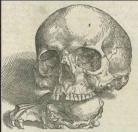 A human skull lies atop a dog skull, representing Galen's misuse of animals to describe human anatomy. This illustration can be seen in Vesalius' manual. |
Kate Harris | ||
| 1543 to 4 Jul 1623 |
Life of William Byrd:Born in 1543 in London, England, Byrd was a gifted pupil of Thomas Tallis, and showed great talent playing the organ. Together, these two were tasked by Elizabeth I with importing, printing, publishing, and selling music. They put these together in a collection called Cantioned sacrae, in which Tallis contributed 16 and Byrd 18. Byrd continued to write compositions, both church-related and secular. One of his greatest collections was named Gradualia in which he attempted to comprise music for both the daily routine of mass and the special occasions. One note about this is that he often composed church music in both English and Latin, which was abnormal for the time. In addition, Byrd played a huge role in pioneering the development of fantasia, another form of music composition that would explode in popularity in the 17th and 18th centuries. He died on July 4, 1623. Image Source: Wikipedia |
Justin Chan |



